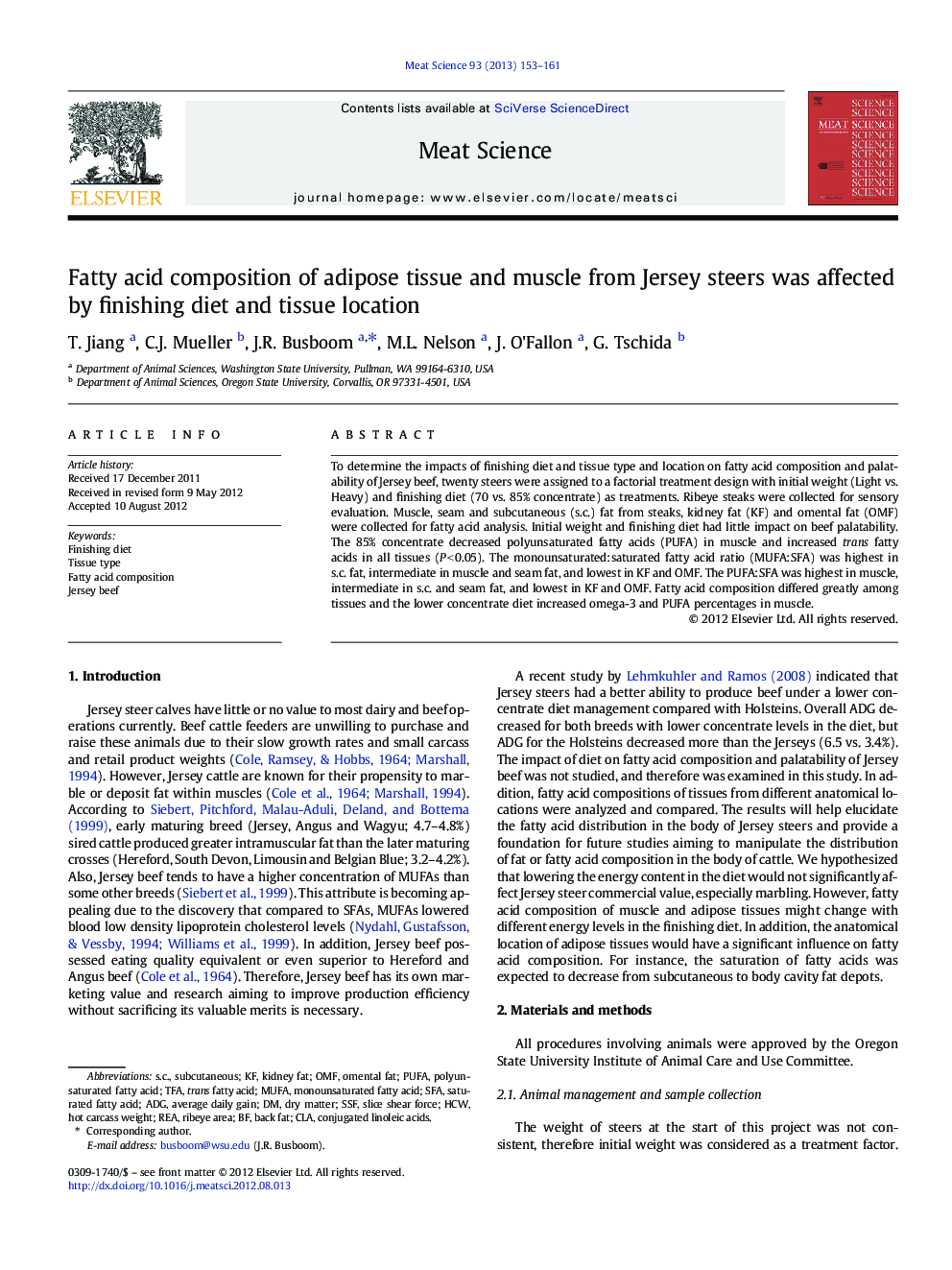| Article ID | Journal | Published Year | Pages | File Type |
|---|---|---|---|---|
| 5792415 | Meat Science | 2013 | 9 Pages |
To determine the impacts of finishing diet and tissue type and location on fatty acid composition and palatability of Jersey beef, twenty steers were assigned to a factorial treatment design with initial weight (Light vs. Heavy) and finishing diet (70 vs. 85% concentrate) as treatments. Ribeye steaks were collected for sensory evaluation. Muscle, seam and subcutaneous (s.c.) fat from steaks, kidney fat (KF) and omental fat (OMF) were collected for fatty acid analysis. Initial weight and finishing diet had little impact on beef palatability. The 85% concentrate decreased polyunsaturated fatty acids (PUFA) in muscle and increased trans fatty acids in all tissues (PÂ <Â 0.05). The monounsaturated:saturated fatty acid ratio (MUFA:SFA) was highest in s.c. fat, intermediate in muscle and seam fat, and lowest in KF and OMF. The PUFA:SFA was highest in muscle, intermediate in s.c. and seam fat, and lowest in KF and OMF. Fatty acid composition differed greatly among tissues and the lower concentrate diet increased omega-3 and PUFA percentages in muscle.
⺠We determined impacts of finishing diet and tissue type on fatty acid composition and palatability of Jersey beef. ⺠The 70% concentrate finishing diet achieved similar marbling score and palatability compared to the 85% concentrate diet. ⺠The lower energy diet increased omega-3 and total PUFA levels in muscle tissue. ⺠Fatty acid composition differed among tissues. Muscle was higher in PUFA. Seam and s.c. fat were higher in CLA. ⺠Jersey steers appear to be adaptable to higher forage feeding systems.
